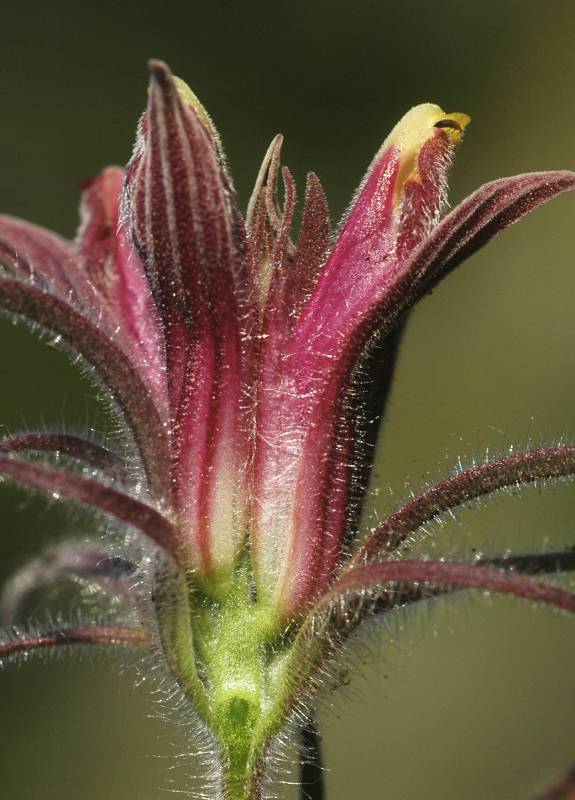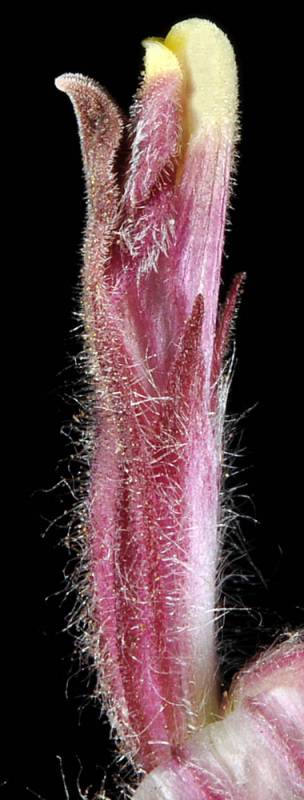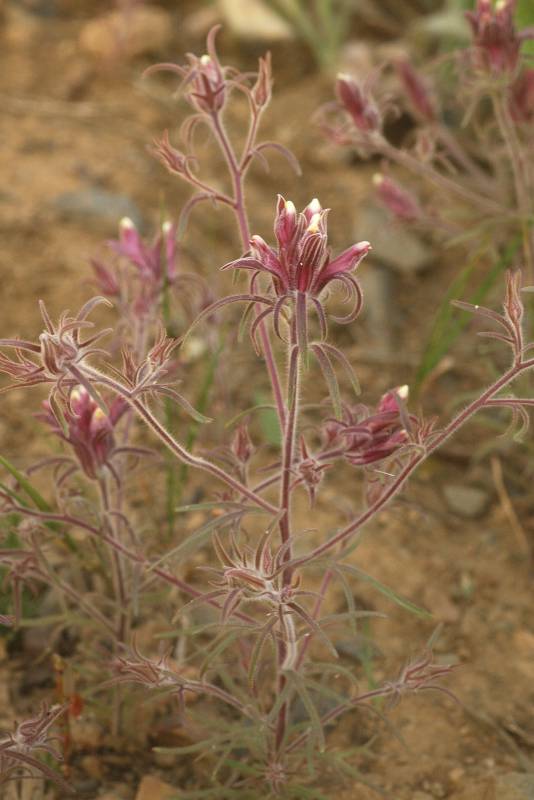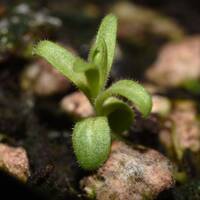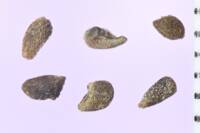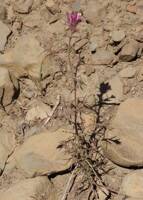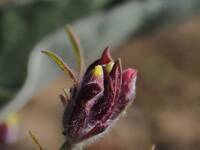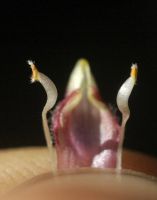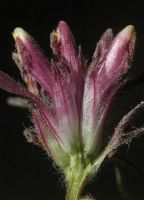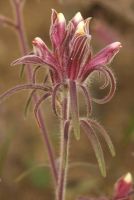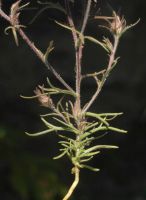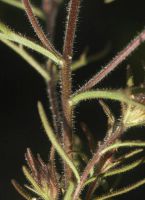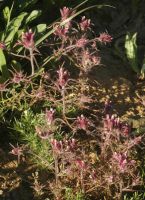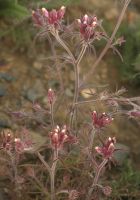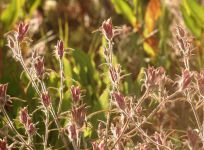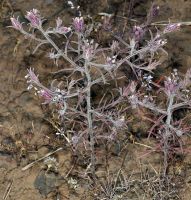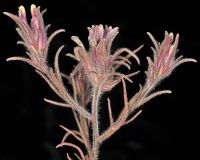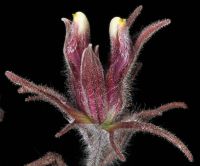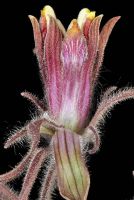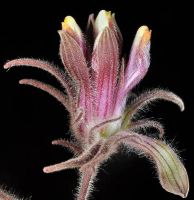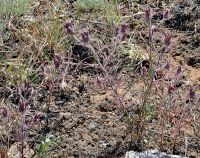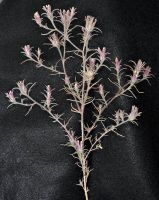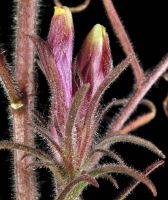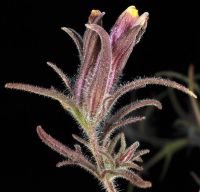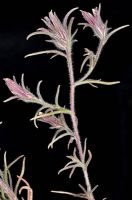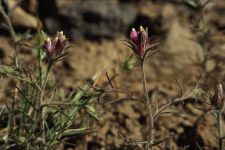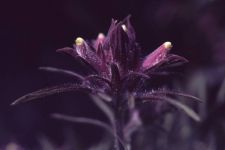Distribution: Occurring east of the Cascades crest in Washington; Washington to California, east to Idaho and Nevada.
Habitat: Dry, open woods and ridgelines from sagebrush desert to subalpine.
Flowers: June-September
Origin: Native
Growth Duration: Annual
Conservation Status: Not of concern
Pollination: Bees, flies, wasps
Annual, the stems 1-6 dm. tall, usually branched, the herbage spreading-hairy, many of the hairs gland-tipped.
Leaves alternate, all cauline, 1-5 cm. long, linear, those of the branches entire.
Flowers in tight clusters of 2-5 terminating the branches, subtended by trifid bracts which resemble the foliage leaves; calyx purplish, cleft to the base into 2 segments, the lower segment several nerved, 1-1.5 cm. long; the upper segment shorter, 2-nerved, bifid, the teeth 2-5 mm. long; corolla purplish, bi-labiate, the upper lip hooded and enclosing the 2 stamens, the lower about equal length, with 3 short lobes.
Few-seeded capsule.
Publication: Prodr. 10: 597. 1846.
PNW Herbaria: Specimen records of Cordylanthus capitatus in the Consortium of Pacific Northwest Herbaria database
WA Flora Checklist: Cordylanthus capitatus checklist entry
OregonFlora: Cordylanthus capitatus information
E-Flora BC: Cordylanthus capitatus atlas page
CalPhotos: Cordylanthus capitatus photos

